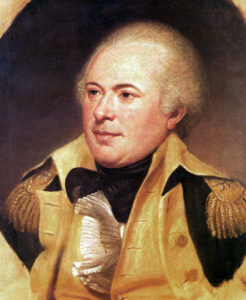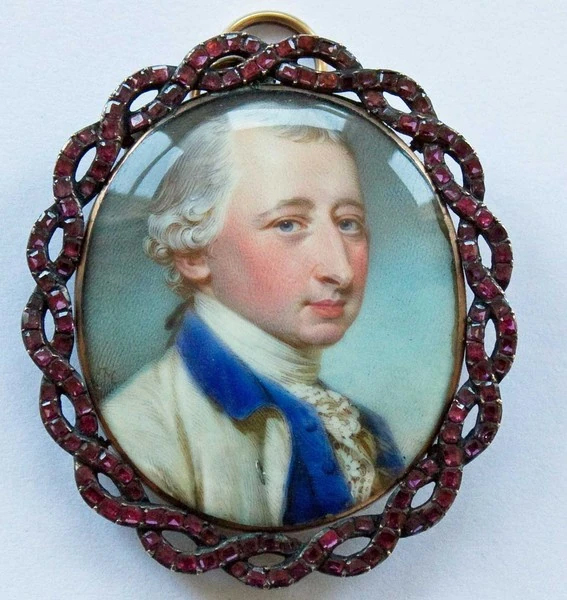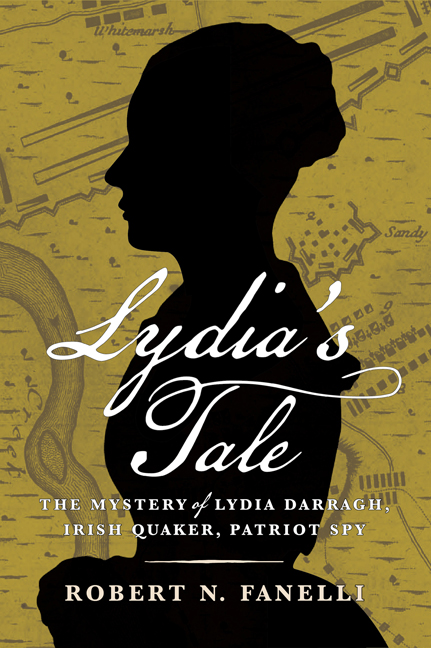The common viewpoint on Benedict Arnold’s role in the Battle of Bemis Heights on October 7, 1777 is based almost exclusively on the early nineteenth century testimony of James Wilkinson. That view holds that Arnold, after clashing with Gates over matters involving the Battle of Freeman’s Farm on September 19, was without a command on October 7, but nonetheless boldly rode onto the battlefield and rallied flagging troops, ensuring victory at a key moment. But is Wilkinson a reliable source? He was, after all, a man steeped in controversy; Theodore Roosevelt said of him, “In all our history, there has been no more despicable character.”[1] In 1787, Wilkinson worked as a double agent for the Spanish while being a senior officer in the American Army. Though his ultimate goal of delivering the states of Kentucky and Tennessee to the Spanish Crown failed, Wilkinson evaded capture and died in ignominy. He was relieved of duty and court-martialed during the War of 1812 and wrote a memoir in an attempt to clear his name.[2]

Wilkinson was present at Saratoga and witnessed the events of October 7. The account from his memoir in 1816 states that Arnold was not given command that day. He called Arnold a traitor he “would not offer injustice for,” and called his own account a “statement of facts” against misinformation spread at the war’s end.[3] Wilkinson gave Arnold the benefit of the doubt, asserting that it is “natural” for someone of Arnold’s status to “feel irritated by the humiliating situation in which he found himself.”[4] He continued by claiming Arnold was drunk and rode around the camp in a frenzied state.[5] As he put it, Arnold acted rashly and belligerently and even wounded an officer in his tirade.[6] During the engagement on Bemis Heights, Arnold was reckless and darted across the battlefield from left to right, riding through enemy fire.[7] Wilkinson finished his account with this final anecdote: “It is certain that he neither rendered service nor deserved credit on that day, and the wound he received alone saved him from being overwhelmed by the torrent of General Gate’s good fortune and popularity.”[8]
Most, if not all, historians ascribe some substance to Wilkinson’s memoir. Though there are occasions where the comments of drunkenness and being underserved of credit are scrutinized if not rejected, the prevailing opinion is that Arnold was not given command on that day and decided to join the battle of his own volition.[9] This idea remained for nearly two hundred years of historiography until differing evidence emerged in 2016.
In August of that year, a letter was sold on the e-commerce website eBay; the seller and buyer of this letter are unknown, but historian Eric Schnitzer obtained a copy of it. He proceeded to authenticate and transcribe the letter and present it at Saratoga National Historical Park. The letter was dated October 9, 1777, and was a communication between New Hampshire Lt. Nathaniel Bacheller and his wife, Suzanne. His letter’s contents provide a perspective contrary to that of Wilkinsons.
Bacheller’s regiment, led by Brig. Gen. Enoch Poor, was instructed to join Arnold’s brigade at 2 in the afternoon on October 7. At that moment, the British engaged Patriot riflemen, and Arnold went out to view the conflict. General Gates arrived and called a dispatch rider to retrieve Arnold because he ordered the assault and feared Arnold would accidentally fire upon Col. Andrew Scammell’s 3rd New Hampshire Regiment.[10] Arnold returned and told Gates the enemy’s position. He implored Gates to reinstate his command, asserting, “It is late in the day, but let me have men, and we will have some fun with them before sunset.”[11] Gates agreed, and the assault on Balcarres’s Redoubt commenced.[12] This letter indicates that Arnold was given command on October 7, quite in contrast to Wilkinson’s accounts of events.
There are other sources that help corroborate Bacheller’s letter, and which in some ways accord with Wilkinson. In 1951, Charles W. Snell arranged an order of battle for the American forces at Bemis Heights. Snell found that Col. Daniel Morgan “had received special orders to act only upon orders received directly from Gates’ headquarters.” Later, Morgan left Gates’ command and was under Arnold, causing subsequent strife between the two.[13] He asserted that Oliver Wolcott’s brigade also joined Arnold.[14] Historian Samuel Woodruff continues this by claiming that Arnold and Morgan consulted each other before the battle.[15] This is consistent with Bacheller’s letter stating that Poor’s regiment was also under Arnold’s command.
Returning to Wilkinson’s account, his assertion that Arnold was drunk and acting belligerently is inconsistent with Snell’s conclusions. Wilkinson described Arnold as grasping for power and riding through enemy fire in an attempt to rally “his” men. This is plausible if we accept that Arnold was beloved by the soldiery; Col. Henry Livingston once said Arnold was the “life and soul of the troops.”[16] Perhaps, seeing Arnold’s impassioned tirade, soldiers followed him out of sheer impulse.
But it was Gates who gave Arnold credit after the British surrender at Saratoga.[17] Moreover, his actions were praised by leaders such as Scammell and Poor.[18] This differs significantly from Wilkinson’s sentiments, who believed that Arnold did not deserve credit. This inconsistency brings doubt as to whether or not Wilkinson was telling the truth. Bacheller’s letter proves to be more consistent with other sources.
How does this change our understanding Arnold and the Battle of Bemis Heights? Firstly, it vindicates Arnold’s actions as coordinated and not recklessly impulsive; secondly, it paints him as a collected, obedient, and professional commander instead of a sulking, drunken fool. Thirdly, this pivotal moment in Arnold’s career, where he led the assault factored in turning the tide of the war, can now be viewed with a more professional perspective.
As for Wilkinson, his testimony appears to be a ghastly falsehood. Wilkinson, a traitor in his own right, wrote his memoirs hoping to vindicate himself, but the truth of his treachery still became exposed. He wrote his description of Arnold at Saratoga to purposely defame him. Perhaps Wilkinson threw Arnold under the bus as a confession for his own treason.
(Acknowledgements. I extend my fullest gratitude to Eric Schnitzer of the Saratoga National Historical Park for transcribing and giving me access to Bacheller’s letter. I also want to thank Dr. Chris Smith from Liberty University’s Department of History for his assistance.)
[1] Robert Brammer, “General James Wilkinson, the Spanish Spy Who was a Senior Officer in the U.S. Army During Four Presidential Administrations,” Library of Congress Blogs, April 12, 2020, blogs.loc.gov/law/2020/04/general-james-wilkinson-the-spanish-spy-who-commanded-the-u-s-army-during-four-presidential-administrations/.
[2] Adam Henry and Earl Harbert, History of the United States of America During the Administrations of James Madison (New York, NY: Random House, 1986), 923.
[3] James Wilkinson, Memoirs of My Own Times (Printed by Abraham Small, 1816), 272.
[4] Ibid., 273.
[5] Ibid.
[6] Ibid.
[7] Ibid.
[8] Ibid.
[9] Any scholarship before 2016 would have an account similar to Wilkinson’s memoir. Amongst them is James Kirby Martin, Benedict Arnold: An American Warrior Reconsidered (New York, NY: NYU Press, 1997); Theodore Corbett, No Turning Point: The Saratoga Campaign In Perspective (Norman, OK: University of Oklahoma Press, 2012); Barry K. Wilson, Benedict Arnold: A Traitor In Our Midst (Montreal, QE: McGill-Queen’s University Press, 2001); and after 2016, John F. Luzader, Saratoga: A Military History of the Decisive Campaign of the American Revolution (New York, NY: Savas Beatie, 2018).
[10] Nathaniel Bacheller to Suzanne Bacheller, October 9, 1777 (transcript), Saratoga National Historic Park, Stillwater, NY.
[11] Ibid.
[12] Ibid.
[13] Charles Snell, “A Report on the Organization and Numbers of Gates’ Army, September 19, October 7, and October 17, 1777, Including an Appendix with Regimental Data and Notes,” February 1, 1951, npshistory.com/publications/sara/gates-army.pdf.
[14] Ibid.
[15] Samuel Woodruff, An Original, Compiled and Corrected Account of Burgoyne’s Campaign (Albany, NY: Munsell, 1844), 256.
[16] Brumwell, Turncoat, 107.
[17] Ibid., 109.
[18] Corbett, No Turning Point, 220.








9 Comments
I find it interesting that most accounts of the October 7th, 1777 battle always seem to overlook General John Paterson who narrowly escaped death, his horse having been shot under him by a cannonball. The only place that I have seen anything written about the bravery of the General was written is in a biography by his grandson Thomas Egleston.
As an early American History Major and a former US Marine Infantry officer I have come to read any Military History written by civilians without any practical military experience with a great deal of skepticism. It’s not that the scholarship is wanting, the problem is on an over reliance on scholarship. A lot of errors can be corrected just by experience. That being said I always discounted accounts that painted Arnold as anything less than a superb tactician and extremely cool under fire. I’ve also come to respectect the opinions of leaders like Morgan, Schuyler, Poor, and Washington. There is no doubt he could inspire men to undertake and complete extraordinary feats of arms, and while not always tactically successful, they all had positive strategic consequences. (How to say the man was military genius without using the word genius?) None of the popular accounts of Arnold at Saratoga rang true, too much self dealing and retro-active judgement rendered after the fact of Arnold’s treachery. It was unfortunate for America that Arnold had too many detractors nurturing Arnold’s sense of grievance. Not that, that in any way justified his treachery, but I can’t help wondering what a timely promotion, and some official recognition, might have had on US History. What if Arnold had been sent to command the Southern Department instead of Granny Gates . . .
I have always been skeptical of anything Wilkinson has said against Arnold and think that Washington really screwed up when passed over Arnold on a promotion or important assignment.
Not sure that GW had the power to promote to General, I think that was up to the Continental Congress, who was apportioning generalships’ according to contribution, and of course promoting politicians over combat experience–John Stark, of New Hampshire, is a good example of that.
I think Mr. Wood’s article is an important contribution to the ongoing debate about Arnold and his actions at Bemis Heights. I remember a presentation at a conference a few years ago at Williamsburg on the recently discovered Bacheller letter. I immediately recognized its importance even though I’m not a military man, and only understood the Arnold story up until then from the traditional telling of it. Revisionist history comes about sometimes as a necessity because of new evidence revealed. And this letter changes the Arnold story significantly. So, I applaud the succinct summary offered here by Mr. Wood on how the letter shakes up a long-told story of Arnold’s actions and forces a reexamination. If anything, the new evidence that has emerged makes the story even more complicated for Arnold and his subsequent actions.
I would like to point out the Horatio Gates was the US Army’s very first REMF. And not just an ordinary bean counter but a British Army Trained REMF. While only able to afford a Captaincy in the British Army, he was never given command of a company and spent all his career as a staff officer, working on supply issues. It wasn’t that he was brilliant so much as he was not trusted to command troops–and that bar was very, very low. It never occurred to anyone in the Continental Congress to ask him, how he could spend his entire adult life as a company grade office and never actually command troops. American troops called him Granny Gates, which one recent American Historian, with no military experience whatsoever, opined was a term of endearment! Possibly, I am skeptical, but it was not a name given for any serious military qualities!
There is no evidence that the nickname “Granny Gates” was used during the Revolutionary War – the nickname began to be used by historians in the 19th century. See: https://allthingsliberty.com/2014/10/the-myth-of-granny-gates/
Horatio Gates commanded a Provincial company in the British vanguard at the 1755 Battle of Monongahela. Later, Gates became a British Army brigade major, learning to be a general officer from proficient superiors. While he did not personally participate in combat, Gates’ strategic generalship during the Saratoga campaign was first-rate. For example, he moved the army forward from Stillwater and constructed stout defenses on Bemis Heights, which allowed Arnold and Morgan to sally forth without significant risks to the army. While many popular accounts fault Gates for cowardly retreating after the disastrous defeat at Camden, contemporaries did not. Maj. Gen. Nathanael Greene refused to join Alexander Hamilton and others who criticized Gates’ retreat heavily. Greene found no fault with Gates’ actions; tellingly, no censure or court martial ensued. Gates’ biggest mistake was not on the battlefield but in contesting Washington’s leadership of the Continental Army.
In 1933 historical novelist Kenneth Roberts published his “Rabble in Arms” which put Benedict Arnold in a very good light as the hero of the battles of Valcour Island as well as Saratoga. That popular novel certainly would have raised Arnold’s credibility at least to some extent.
As for Wilkinson – see JAR August 2013 – I wrote “Was General Anthony Wayne Murdered?” pointing out the distinct possibility that Wilkinson arranged for Anthony Wayne to be murdered. The most amazing thing about Wilkinson is that he was a traitor for decades and nobody seemed to notice until long after his death.